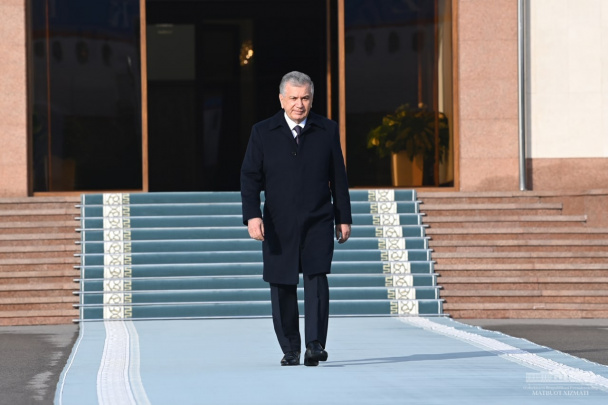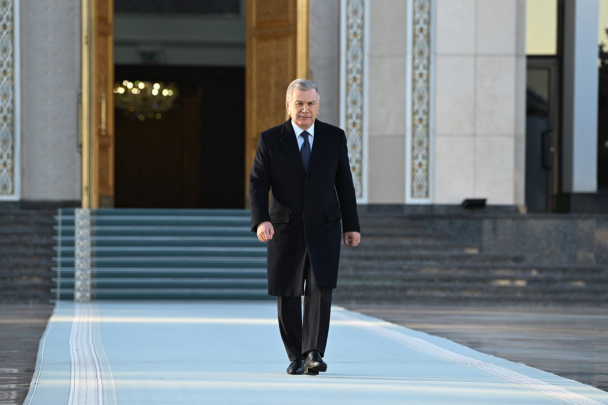Experts: Taliban’s “megaproject” could leave all of Central Asia without water
Afghanistan is actively implementing a project to build a giant canal “Kushtepa” in the province of Balkh on the border with Turkmenistan. The start of its construction was announced a year ago.

Photo: ia-centr.ru
According to experts from the Center for the Study of Socio-Political Processes in the Post-Soviet Space of Moscow State University, the length of the new canal should be 285 km, width – 100 meters, depth – 8.5 meters. The canal originates from the Amu Darya in the Kaldar district, Balkh province. The water for the canal will be taken from the same river. The capacity of the channel will be 650 cubic meters per second.
The project is being implemented by the national development company, construction is carried out at the expense of public funds. The estimated cost of the project is about $684 million.
According to the plan of the developers, the canal will irrigate 3 million jeribs of land (1 jerib - 2,000 square meters) in the provinces of Balkh, Jawzjan and Faryab and provide employment for about 250,000 people. The Taliban believe that the project will help water dry regions, which will give impetus to the development of agriculture. Now more than 6,000 people have been involved in the construction of the canal.
At the end of November 2022, the length of the completed section was about forty kilometers. Completion of the project is scheduled for 2028.
Experts fear that when the “Kushtepa” canal is put into operation, the situation with the watershed in the region will deteriorate sharply. And this despite the fact that in recent years all the republics of Central Asia are increasingly feeling the lack of water.
“The downstream Uzbekistan and Turkmenistan may suffer the most. Countries could lose up to 15% of irrigation water from the region’s main river. But the main consumer of water in Central Asia is Uzbekistan, whose population has reached 34 million people and continues to grow. Moreover, 90% of water in the republic is used in agriculture. It should be noted that since June last year, the filling of the Amudarya basin has fallen to 65–85% and has remained below the norm so far. Last year’s water savings from Tashkent, Dushanbe and Ashgabat did not give the desired effect,” the report says.
The authorities of Kabul are not going to limit themselves only to the construction of the “Kushtepa” canal. Afghanistan plans to build the Dasht-i-Djun hydroelectric complex, which can accumulate most of the summer flow of the Pyanj River. Thus, the Taliban are going to take the lion’s share of the water from the northern transboundary rivers.
The implementation of these two projects, according to experts, may entail not only economic and social problems in Uzbekistan and Turkmenistan, but also an environmental disaster throughout Central Asia.
The fact is that the Amudarya is the main source not only for the drying up Aral Sea, but also for reservoirs and canals. There is a threat that the river may not reach its mouth and the remains of the Aral at all. Protected areas with unique nature are at risk of remaining without life-giving moisture.
The Lower Amudarya State Biosphere Reserve, which is part of the UNESCO world network of biosphere reserves, will be the first to be hit. This protected area is located in the northern part of the lower reaches of the Amu Darya, southeast of the former coast of the Aral Sea.
It is noted that the Interstate Coordinating Water Commission of the Central Asian countries (ICWC) is also shrugging their shoulders: they have no legal mechanisms to resolve the situation.
“It is not yet possible to negotiate with official Kabul or admit Afghanistan to the ICWC, since the Taliban is a banned organization,” the experts said.
Last November, the ICWC participants in Ashgabat approved the water withdrawal limits for each of the five countries of the region for the non-growing period 2022-2023 for the basins of the two main rivers – the Syrdarya and the Amudarya.
Under the agreement, the limit on water withdrawal from the Amudarya basin amounted to 55.4 billion cubic meters of water. Of these, Uzbekistan got the most water – 23.6 billion cubic meters and Turkmenistan – 22 billion. The next ICWC meeting will be held in Dushanbe in April this year.
Earlier, it was reported that a delegation headed by the Special Representative of the President of Uzbekistan for Foreign Policy Abdulaziz Kamilov visited Afghanistan.
During the talks, the Acting Deputy PM of Afghanistan, Abdul Ghani Baradar, said that Uzbekistan is ready to cooperate with Afghanistan on the construction project of the Kushtepa canal. According to him, the parties discussed political and economic issues, as well as transit, railway and energy projects.
Abdul Ghani Baradar stressed that over the past year and a half, Afghanistan has developed good political and economic relations with Uzbekistan. He is confident that they will continue to develop. He noted that the strategic position of Afghanistan, as a bridge between the countries of South and Central Asia, can play an important role in trade and transit between Afghanistan and Uzbekistan. He expressed confidence that Uzbekistan and Afghanistan can become effective partners in the region.
In turn, Abdulaziz Kamilov said that the Uzbek authorities support Afghanistan in the international political arena. The Special Representative of the President for Foreign Policy Affairs added that Uzbekistan is ready to work with Afghanistan through technical teams to maximize the benefits of the “Kushtepa” canal project.
It also became known that with the joint implementation of the project, Uzbekistan will receive the right to use water from the Amudarya in accordance with international law. In response, Abdul Ghani Baradar assured the Uzbek side that the completion of the project would strengthen relations between the two countries.
Related News

12:06 / 23.12.2025
Russia’s gas exports to Uzbekistan may surge fourfold by 2030

13:40 / 20.12.2025
President Mirziyoyev proposes long-term cooperation agenda at Central Asia + Japan summit

11:56 / 18.12.2025
Shavkat Mirziyoyev departs for Japan

22:09 / 17.12.2025



